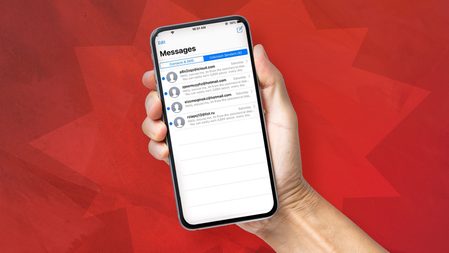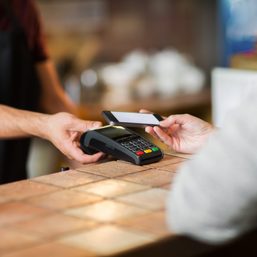SUMMARY
This is AI generated summarization, which may have errors. For context, always refer to the full article.

MANILA, Philippines – Even though cash remains the most common way to pay in the Philippines, 1 in 3 Filipinos believe that could completely change by the end of this decade.
While it might seem like a tall order to transform from a cash-dominant society to a digital savvy one by 2030, there are already signs of the cashless wave growing. In 2023, 43% of Filipinos said they carried less cash in their wallet now than they did a year ago, according to the findings of the Visa Consumer Payment Attitudes Study 2024.
In fact, the percentage of Filipinos who use cash as a payment method has already dropped significantly from the previous year, now down to 87% in 2024 from 96% in 2023.

As cash began to decline in popularity, other modern payment methods rose in its place. In 2023, many Filipinos (87%) used mobile wallets as cash when it came to payment options, with 70% of Filipinos surveyed saying they used cards.
“In the past, it’s always been cash that’s been very dominant in terms of usage. Pero (But) now, what we’re seeing is mobile payments have already matched the level of cash and also on the card side,” said Jeff Navarro, Visa country manager in the Philippines.
Generally, it was the younger age group and affluent segment that was driving the push for a cashless society, with 87% of Gen Zs attempting to go cashless in 2023, along with 86% of those in the Gen Y and affluent groups.
What’s driving the change?
In the Philippines, it’s the rise of mobile wallets – and not more traditional financial products, like cards – leading the shift away from cash.
The use of mobile wallets has already become behavioral as four out of five Filipinos said they paid using their mobile wallet every week, while 34% said they prefer using a mobile wallet “out of habit.”
Meanwhile, 37% of Filipinos said that they are now more comfortable using their mobile wallets to pay for bigger purchases.
“In the past, it used to be on small ticket items, the cheaper ones. But now, because they use it more frequently, and they’re more confident in cashless, even higher ticket items, they’re already comfortable using mobile wallets. And for them, because it doesn’t have any cost – there are no fees – it becomes very convenient,” Navarro said on Thursday, February 29.
The study showed that 34% of Filipinos said having no fees for usage drove them to use mobile wallets. However, some mobile wallets and banks have begun to raise their fees for loading or transferring funds to their wallet. For instance, GCash added a P5-convenience fee for every cash-in transaction for linked BPI and UnionBank accounts in October 2023, while those loading their GCash wallet through the BPI add will also have to pay a P10 fee starting March 1, 2024.
But how confident are Filipinos in going cashless? Most believe that they can go at least a week without paying using physical coins and bills. According to the survey, 82% believe they can go cashless for a day, 68% for three days, and 52% for a week. Among consumers who actually tried to go cashless, the average number of days that they successfully managed not to use cash was 10 days.
That confidence comes from a growing acceptance of cashless forms of payment in the market. The study found that according to 87% of Filipinos, they have seen an increase in acceptance points for mobile wallets, while 63% said the same for card swipes and inserts, and 52% for contactless cards.
Here are the merchant categories where Filipinos saw the most increase in acceptance of cashless payments:
- Supermarket (88%)
- Food & dining (86%)
- Bill payments (82%)
- Retail shopping (80%)
- Convenience stores (75%)
– Rappler.com
Add a comment
How does this make you feel?






![[ANALYSIS] Rule of 120: A practical method of asset allocation and minimizing investment risk exposure](https://www.rappler.com/tachyon/2024/02/tl-rule-120-02222024.jpg?resize=257%2C257&crop=274px%2C0px%2C720px%2C720px)

There are no comments yet. Add your comment to start the conversation.